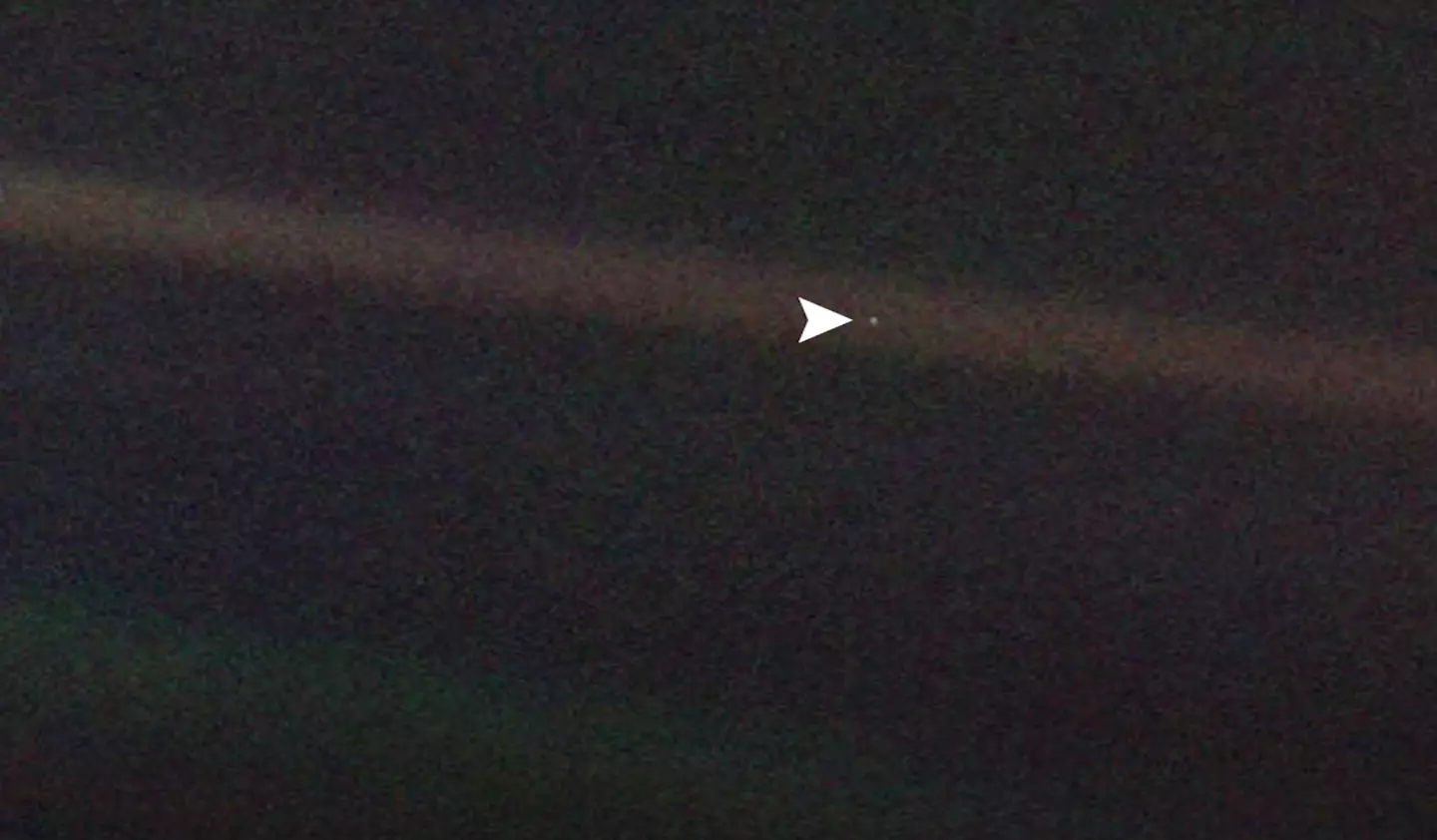
The astronomer who unveiled the ‘Pale Blue Dot’ in the 1990s has explained why he believed the image was so important for all of mankind to see.
Throughout his life, legendary planetary scientist Carl Sagan dedicated his work to furthering our understanding of space and the possibility of extraterrestrial life (aka aliens) existing.
Often described as ‘the scientist who made the Universe clearer to the ordinary person’, Sagan took the complex – and often mind-boggling – world of astrophysics and made it easily accessible to the likes of you and I.
In 1990, Sagan unveiled an image called the ‘Pale Blue Dot’ to the world, take a look at the image below:

The image was released in 14 February 1990 (NASA/JPL-Caltech)
Now, upon first glance I know this photo looks like an image of the night sky taken in your back garden on an old mobile phone.
However, I assure you this is not an average photo of the night sky, but instead an image captured by by NASA’s Voyager 1 around 3.7 billion miles (6 billion kilometers) from the Sun.
The subject of this photo? Planet Earth.
Look closely at the photo and you’ll notice a small pale blue dot just off centre in the upper right part of the image, that’s us.
After seeing the images, Sagan was inspired to use it as a way to drive home just how unique our situation is in the universe.
Talking about the lack of interstellar life in a press conference for the image, Sagan said: “For me, that underscores the rarity and preciousness of the Earth and the life upon it.
“On that blue dot, that’s where everyone you know. Everyone you ever heard of, and every human being who ever lived, lived out their lives.”
Urging others to use the image as inspiration to look after our collective home, he continued: “Just speaking for myself, I think this perspective underscores our responsibility to preserve and cherish that blue dot, the only home we have.”
I can think of a few people who could use such a reminder, that’s for sure.

That’s us, the blue dot (YouTube/The Planetary Society)
Like the astronauts who’ve spoken candidly about the impact of the ‘Overview Effect‘, the image leave a lasting impact on Sagan. He would later go on to name his 1994 book Pale Blue Dot: A Vision of the Human Future in Space after the image.
Proving this photo is definitely not your typical image of the night sky.
The legacy of the ‘Pale Blue Dot’ has gone on to inspire more than Sagan in the subsequent years as well, with Garry Hunt telling the BBC in 2020 that he often uses the image as a way to drive home the importance of taking climate change seriously.
“Every time I give a climate talk and I talk about what you’re doing now to make a change – I show this picture because it shows the Earth is an isolated speck. This tiny blue dot is the only place we can possible live, and we’re making a jolly good mess of it,” he said in the interview.
Featured Image Credit: ( YouTube/ The Planetary Society)



